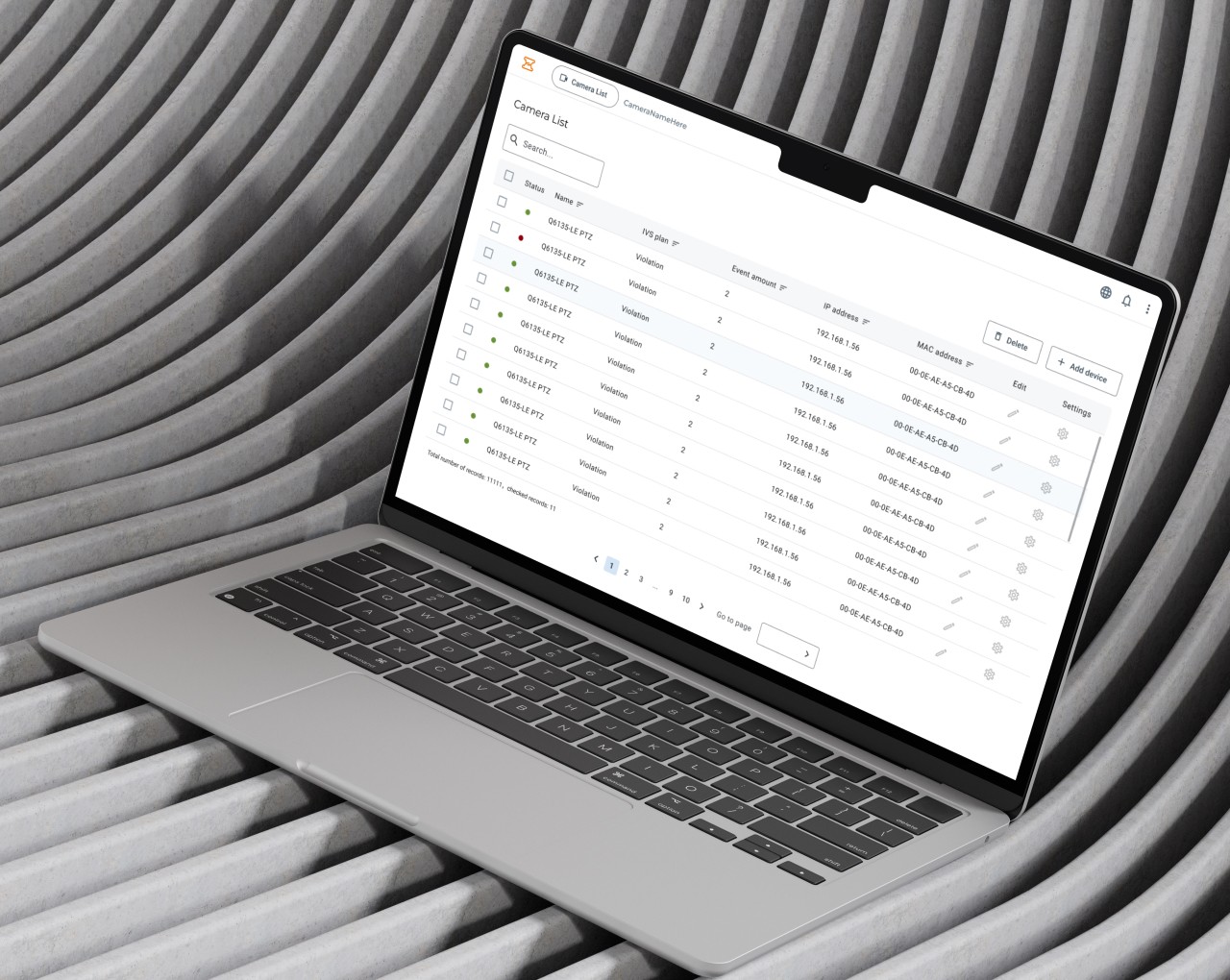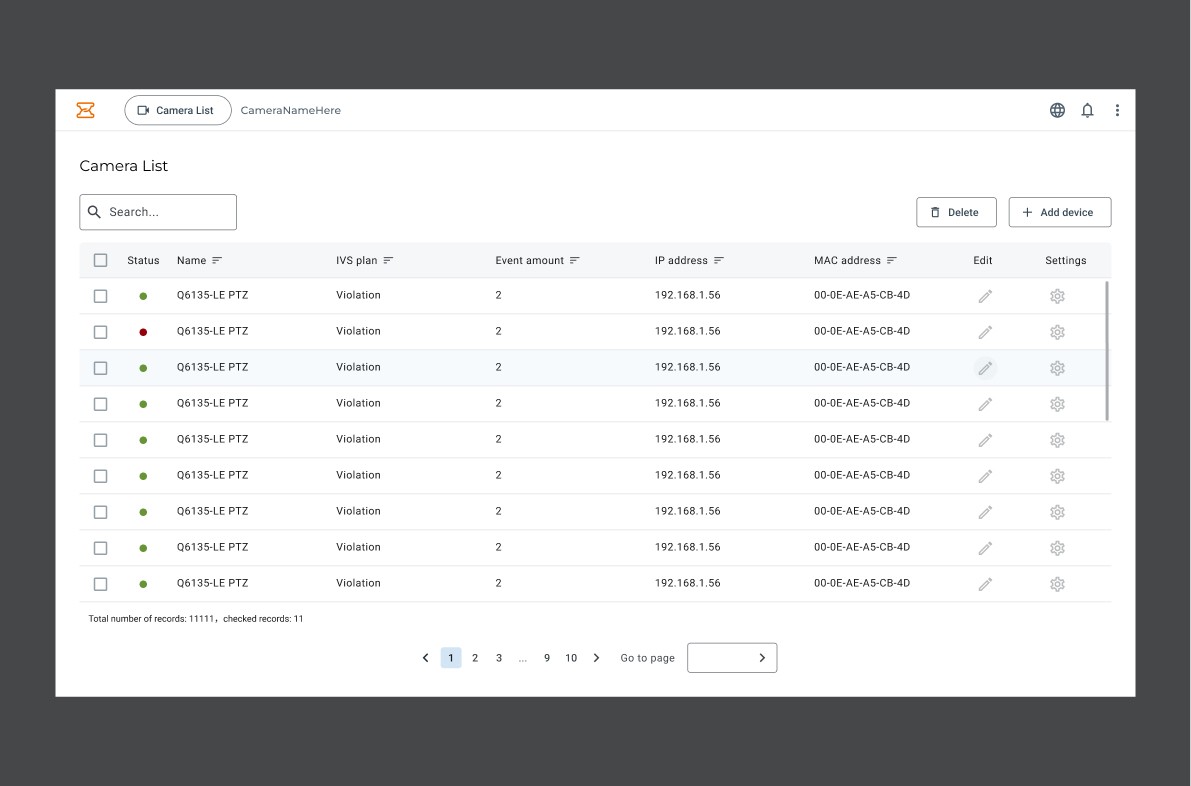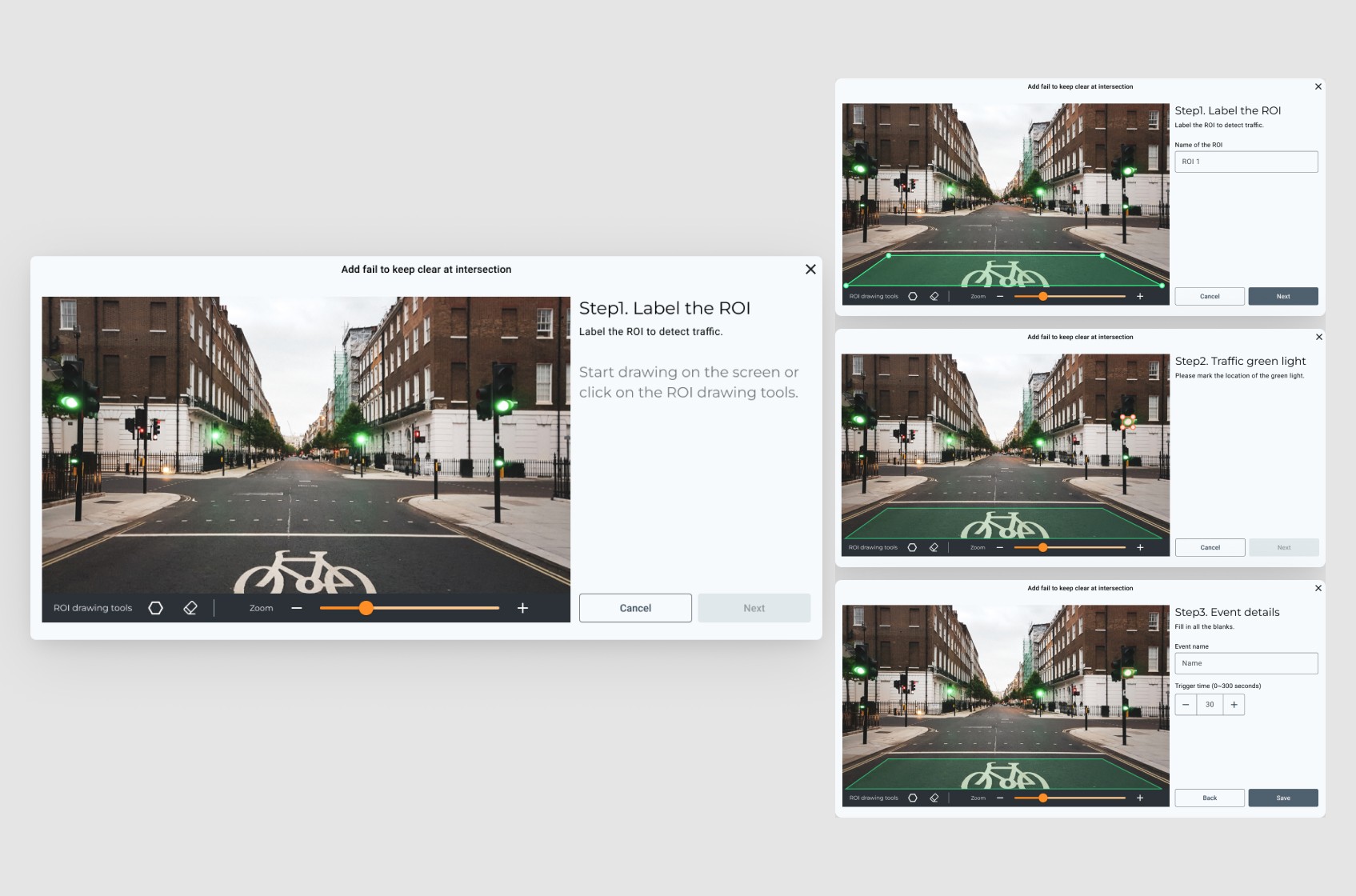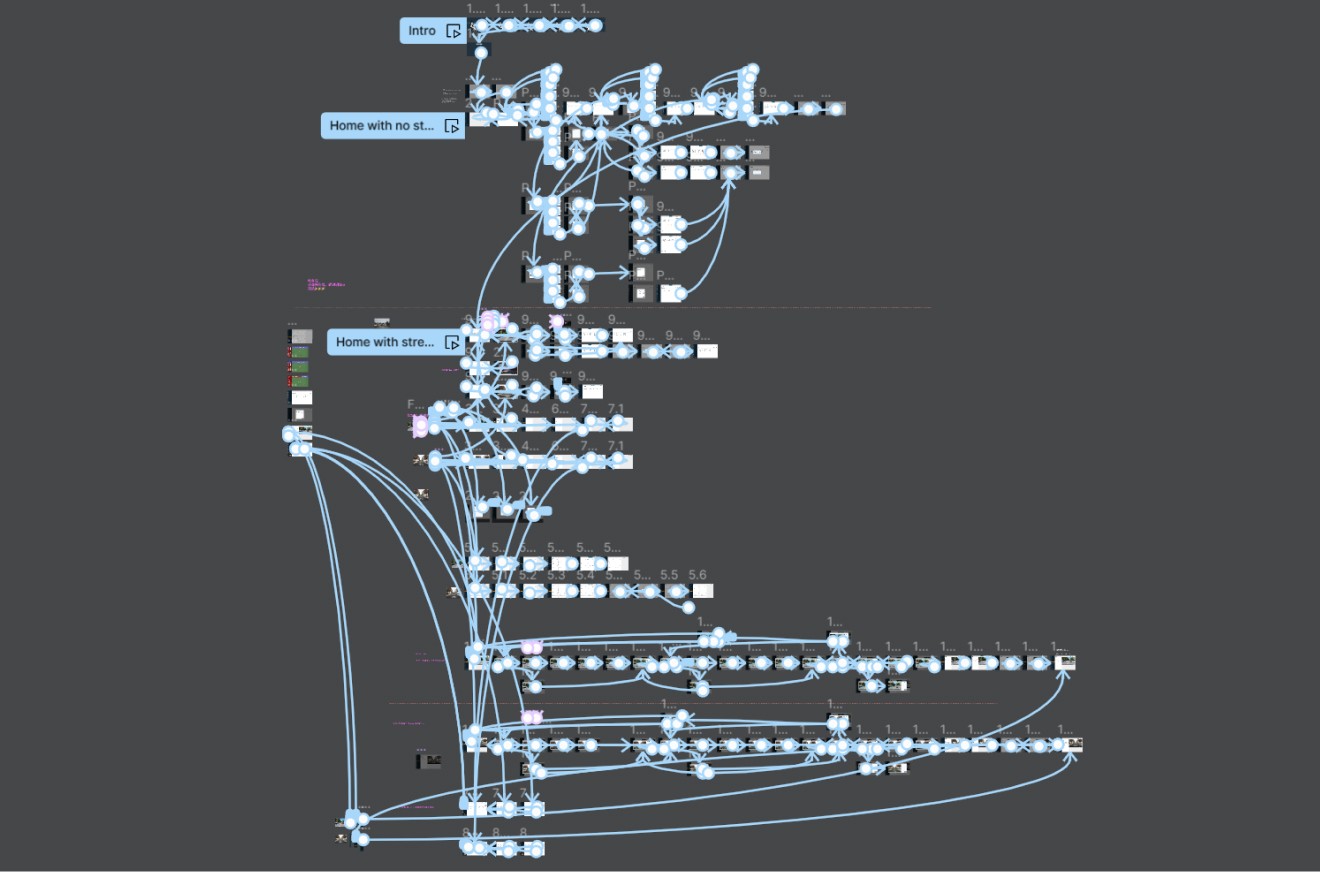Edge AI Camera
Edge AI Camera
Edge AI Camera
Role
Role
Role
Product Designer
Product Designer
Product Designer
Timeframe
Timeframe
Timeframe
Phase 1: Sep 2022 - Nov 2022
Phase 2: Jun 2023
Phase 1: Sep 2022 - Nov 2022
Phase 2: Jun 2023
Phase 1: Sep 2022 - Nov 2022
Phase 2: Jun 2023
Achievement
Achievement
Achievement
Enhanced Batch Configuration Efficiency Increased by 25%
Simplified AI Recognition Setup and Reduced Errors
Enhanced Batch Configuration Efficiency Increased by 25%
Simplified AI Recognition Setup and Reduced Errors
Enhanced Batch Configuration Efficiency Increased by 25%
Simplified AI Recognition Setup and Reduced Errors



Background
We aim to provide the market with edge AI solutions. In our roadmap, we plan to launch a camera interface, utilizing the Edge AI Chip to reduce recognition time and costs.
Design Challenges
Dealing with an untapped market with undefined demands and competitors.
How to seamlessly integrate AI recognition settings into the camera interface
Efficiently managing design iterations when facing major product architecture changes
Research Porcess
Clarify User
Conduct internal FAE interviews to understand the needs and configuration processes of potential user SA.
Clarify Scope
Discuss with PM and engineers to understand the company's market strategy and internal development capabilities, and define the product scope.
Clarify Constraint
Research traditional cameras to understand the necessary camera configuration requirements. Investigate the limitations of AI image recognition.
Background
We aim to provide the market with edge AI solutions. In our roadmap, we plan to launch a camera interface, utilizing the Edge AI Chip to reduce recognition time and costs.
Design Challenges
Dealing with an untapped market with undefined demands and competitors.
How to seamlessly integrate AI recognition settings into the camera interface
Efficiently managing design iterations when facing major product architecture changes
Research Porcess
Clarify User
Conduct internal FAE interviews to understand the needs and configuration processes of potential user SA.
Clarify Scope
Discuss with PM and engineers to understand the company's market strategy and internal development capabilities, and define the product scope.
Clarify Constraint
Research traditional cameras to understand the necessary camera configuration requirements. Investigate the limitations of AI image recognition.
Background
We aim to provide the market with edge AI solutions. In our roadmap, we plan to launch a camera interface, utilizing the Edge AI Chip to reduce recognition time and costs.
Design Challenges
Dealing with an untapped market with undefined demands and competitors.
How to seamlessly integrate AI recognition settings into the camera interface
Efficiently managing design iterations when facing major product architecture changes
Research Porcess
Clarify User
Conduct internal FAE interviews to understand the needs and configuration processes of potential user SA.
Clarify Scope
Discuss with PM and engineers to understand the company's market strategy and internal development capabilities, and define the product scope.
Clarify Constraint
Research traditional cameras to understand the necessary camera configuration requirements. Investigate the limitations of AI image recognition.

Design Solutions
Enhance the efficiency of batch configurations
Users can simultaneously view the status of all cameras and directly modify their IP addresses in the list, eliminating the need for individual handling.

Reducing the complexity of AI recognition setup
Understanding the logic behind AI recognition requires a certain level of background knowledge. Therefore, breaking down the process into smaller steps and using simple and clear language with explicit instructions makes the operation simpler.

Gaining team approval for design improvements through usability testing
After the design delivery, the team proposed changes to the product architecture, emphasizing minimal design alterations to avoid impacting the project schedule. In response, a prototype was developed to quickly test the results, serving as evidence to gain team consensus on the necessary scope of design modifications.

Reflection
Improve coordination with the PM for product updates is crucial. I could improve on these 3 steps:
Brainstorm and explore more possibilities in the early stage with the PM, instead of making big changes later.
Enhance deeper understanding of the underlying logic of the software.
Discuss with the PM and establish a collaborative approach for product changes.

Design Solutions
Enhance the efficiency of batch configurations
Users can simultaneously view the status of all cameras and directly modify their IP addresses in the list, eliminating the need for individual handling.

Reducing the complexity of AI recognition setup
Understanding the logic behind AI recognition requires a certain level of background knowledge. Therefore, breaking down the process into smaller steps and using simple and clear language with explicit instructions makes the operation simpler.

Gaining team approval for design improvements through usability testing
After the design delivery, the team proposed changes to the product architecture, emphasizing minimal design alterations to avoid impacting the project schedule. In response, a prototype was developed to quickly test the results, serving as evidence to gain team consensus on the necessary scope of design modifications.

Reflection
Improve coordination with the PM for product updates is crucial. I could improve on these 3 steps:
Brainstorm and explore more possibilities in the early stage with the PM, instead of making big changes later.
Enhance deeper understanding of the underlying logic of the software.
Discuss with the PM and establish a collaborative approach for product changes.

Design Solutions
Enhance the efficiency of batch configurations
Users can simultaneously view the status of all cameras and directly modify their IP addresses in the list, eliminating the need for individual handling.

Reducing the complexity of AI recognition setup
Understanding the logic behind AI recognition requires a certain level of background knowledge. Therefore, breaking down the process into smaller steps and using simple and clear language with explicit instructions makes the operation simpler.

Gaining team approval for design improvements through usability testing
After the design delivery, the team proposed changes to the product architecture, emphasizing minimal design alterations to avoid impacting the project schedule. In response, a prototype was developed to quickly test the results, serving as evidence to gain team consensus on the necessary scope of design modifications.

Reflection
Improve coordination with the PM for product updates is crucial. I could improve on these 3 steps:
Brainstorm and explore more possibilities in the early stage with the PM, instead of making big changes later.
Enhance deeper understanding of the underlying logic of the software.
Discuss with the PM and establish a collaborative approach for product changes.